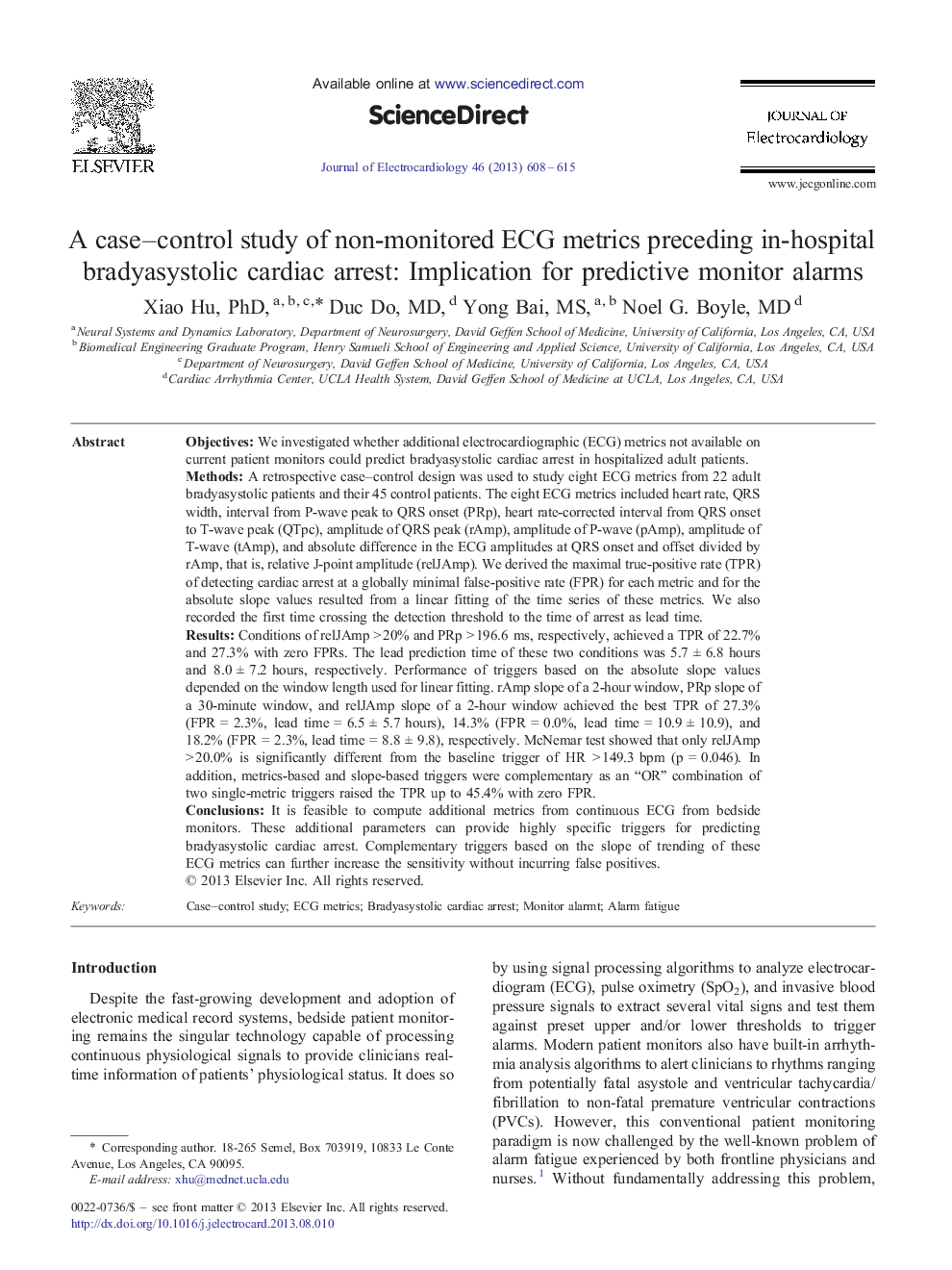| کد مقاله | کد نشریه | سال انتشار | مقاله انگلیسی | نسخه تمام متن |
|---|---|---|---|---|
| 5986714 | 1178862 | 2013 | 8 صفحه PDF | دانلود رایگان |

ObjectivesWe investigated whether additional electrocardiographic (ECG) metrics not available on current patient monitors could predict bradyasystolic cardiac arrest in hospitalized adult patients.MethodsA retrospective case-control design was used to study eight ECG metrics from 22 adult bradyasystolic patients and their 45 control patients. The eight ECG metrics included heart rate, QRS width, interval from P-wave peak to QRS onset (PRp), heart rate-corrected interval from QRS onset to T-wave peak (QTpc), amplitude of QRS peak (rAmp), amplitude of P-wave (pAmp), amplitude of T-wave (tAmp), and absolute difference in the ECG amplitudes at QRS onset and offset divided by rAmp, that is, relative J-point amplitude (relJAmp). We derived the maximal true-positive rate (TPR) of detecting cardiac arrest at a globally minimal false-positive rate (FPR) for each metric and for the absolute slope values resulted from a linear fitting of the time series of these metrics. We also recorded the first time crossing the detection threshold to the time of arrest as lead time.ResultsConditions of relJAmp > 20% and PRp > 196.6 ms, respectively, achieved a TPR of 22.7% and 27.3% with zero FPRs. The lead prediction time of these two conditions was 5.7 ± 6.8 hours and 8.0 ± 7.2 hours, respectively. Performance of triggers based on the absolute slope values depended on the window length used for linear fitting. rAmp slope of a 2-hour window, PRp slope of a 30-minute window, and relJAmp slope of a 2-hour window achieved the best TPR of 27.3% (FPR = 2.3%, lead time = 6.5 ± 5.7 hours), 14.3% (FPR = 0.0%, lead time = 10.9 ± 10.9), and 18.2% (FPR = 2.3%, lead time = 8.8 ± 9.8), respectively. McNemar test showed that only relJAmp > 20.0% is significantly different from the baseline trigger of HR > 149.3 bpm (p = 0.046). In addition, metrics-based and slope-based triggers were complementary as an “OR” combination of two single-metric triggers raised the TPR up to 45.4% with zero FPR.ConclusionsIt is feasible to compute additional metrics from continuous ECG from bedside monitors. These additional parameters can provide highly specific triggers for predicting bradyasystolic cardiac arrest. Complementary triggers based on the slope of trending of these ECG metrics can further increase the sensitivity without incurring false positives.
Journal: Journal of Electrocardiology - Volume 46, Issue 6, NovemberâDecember 2013, Pages 608-615